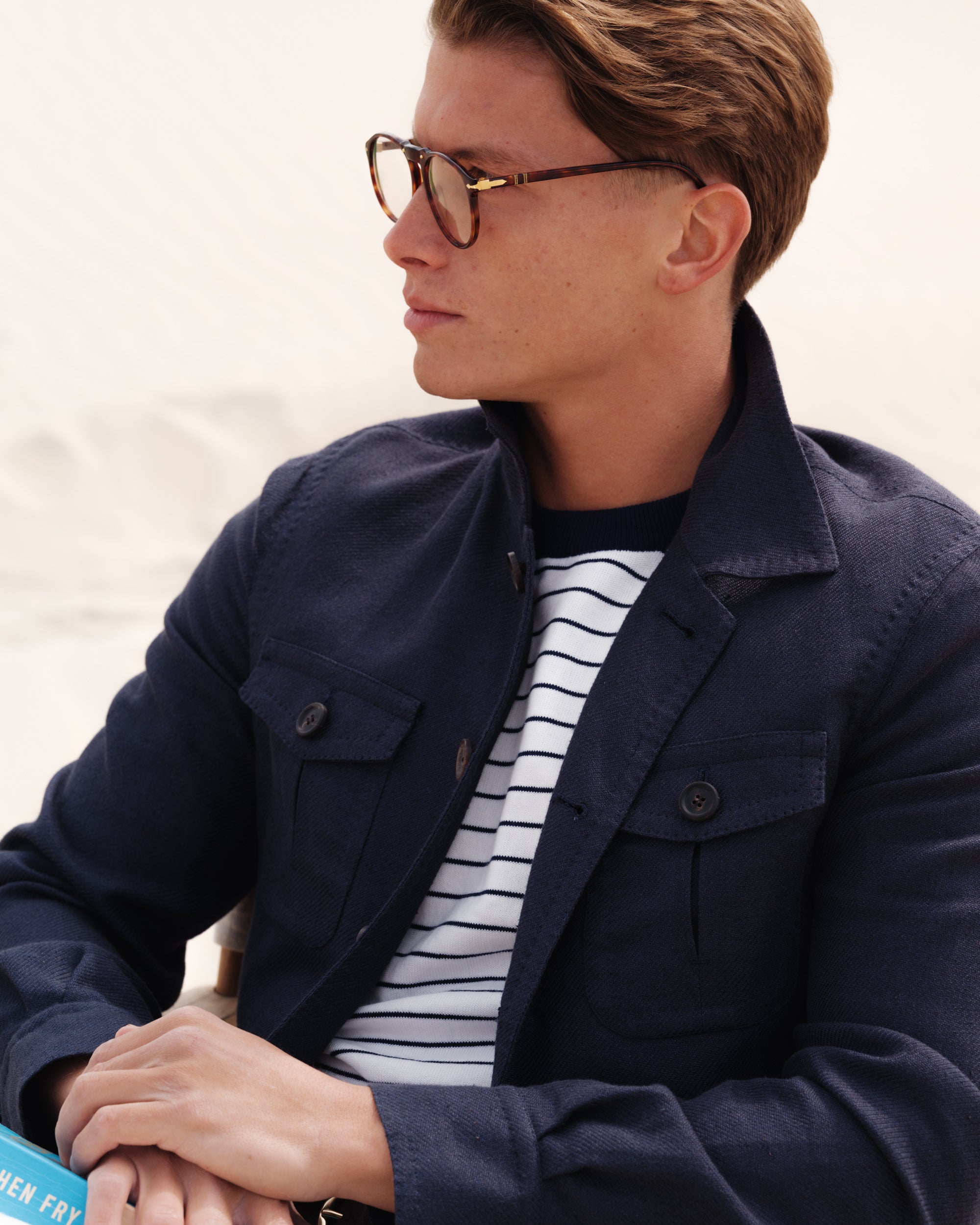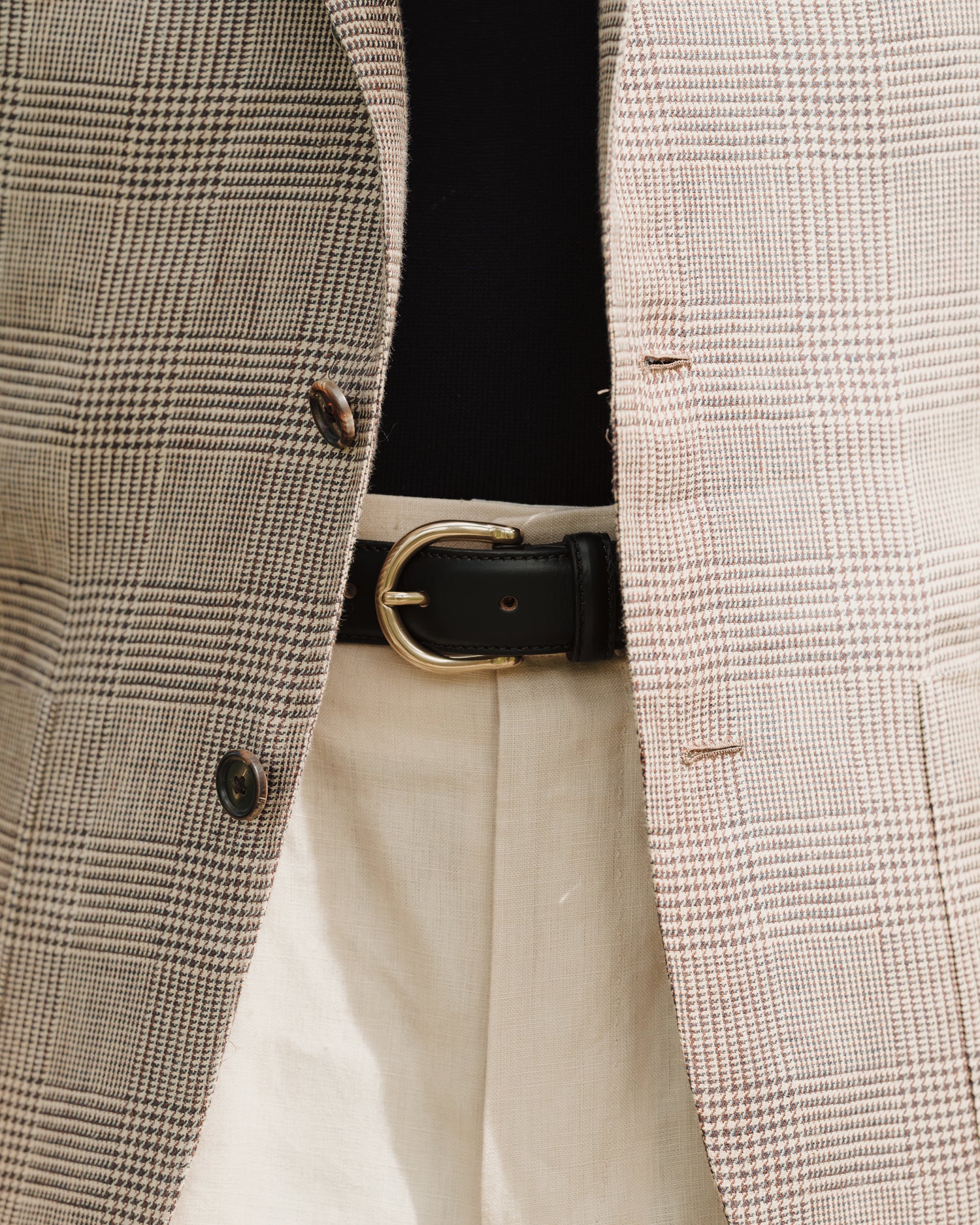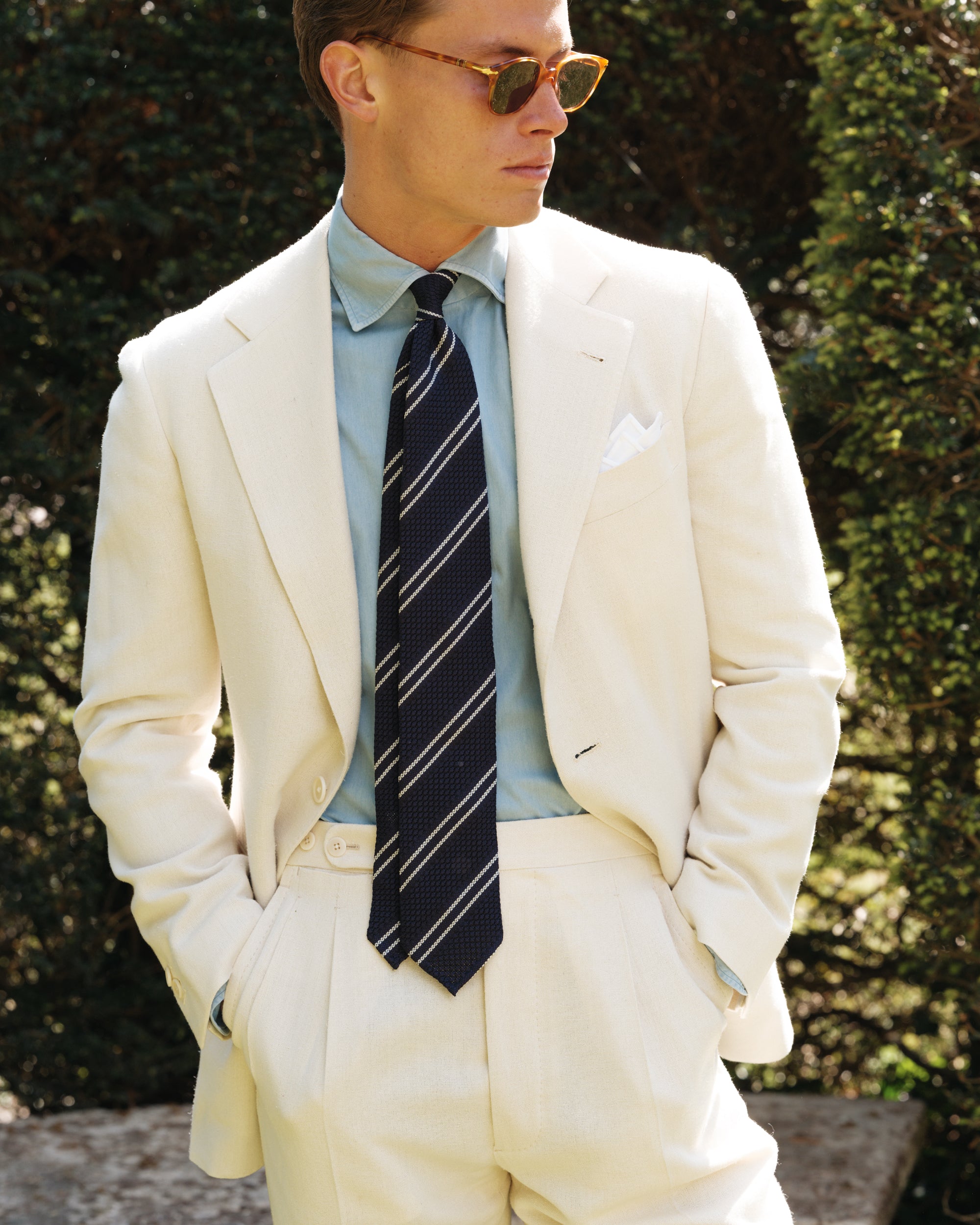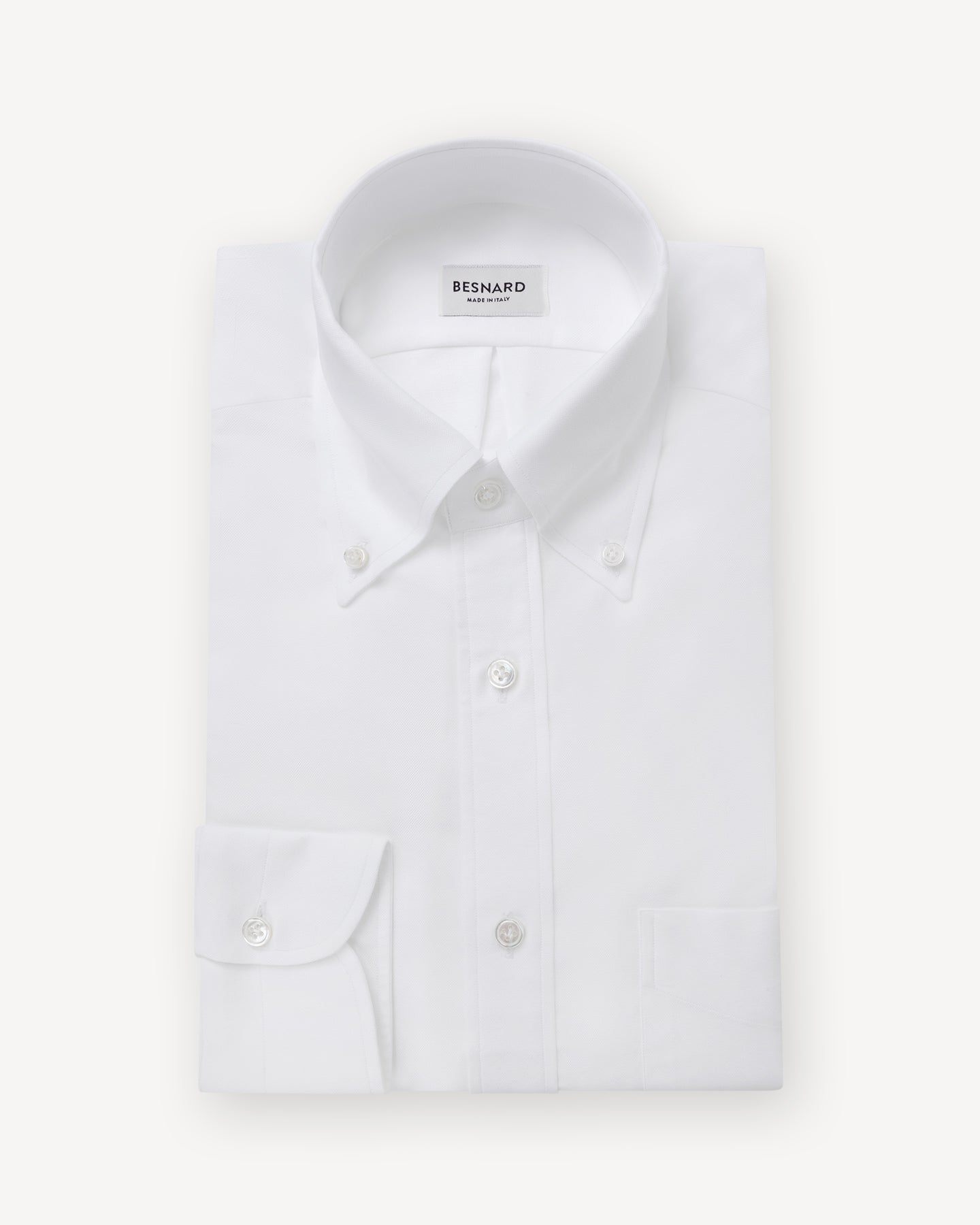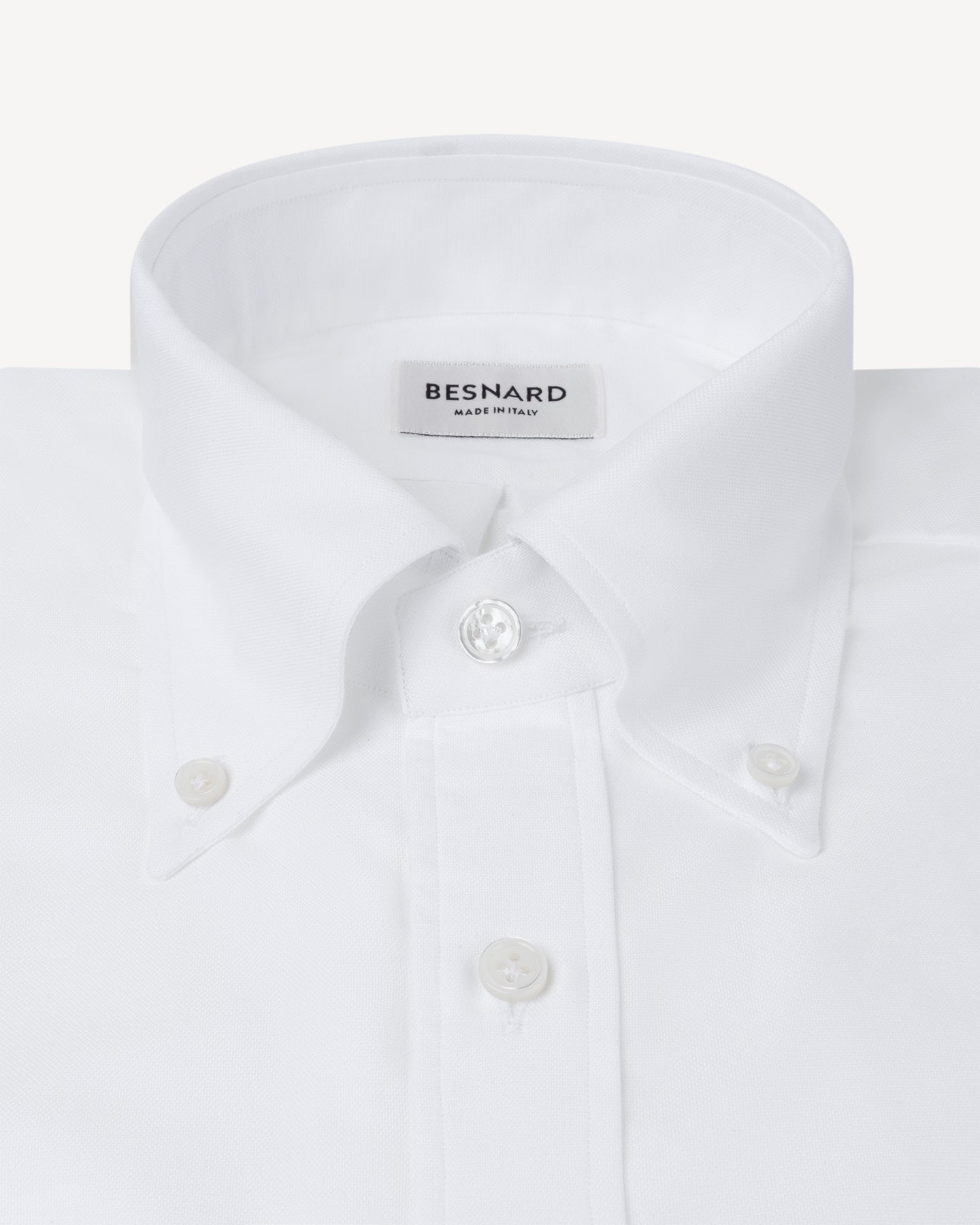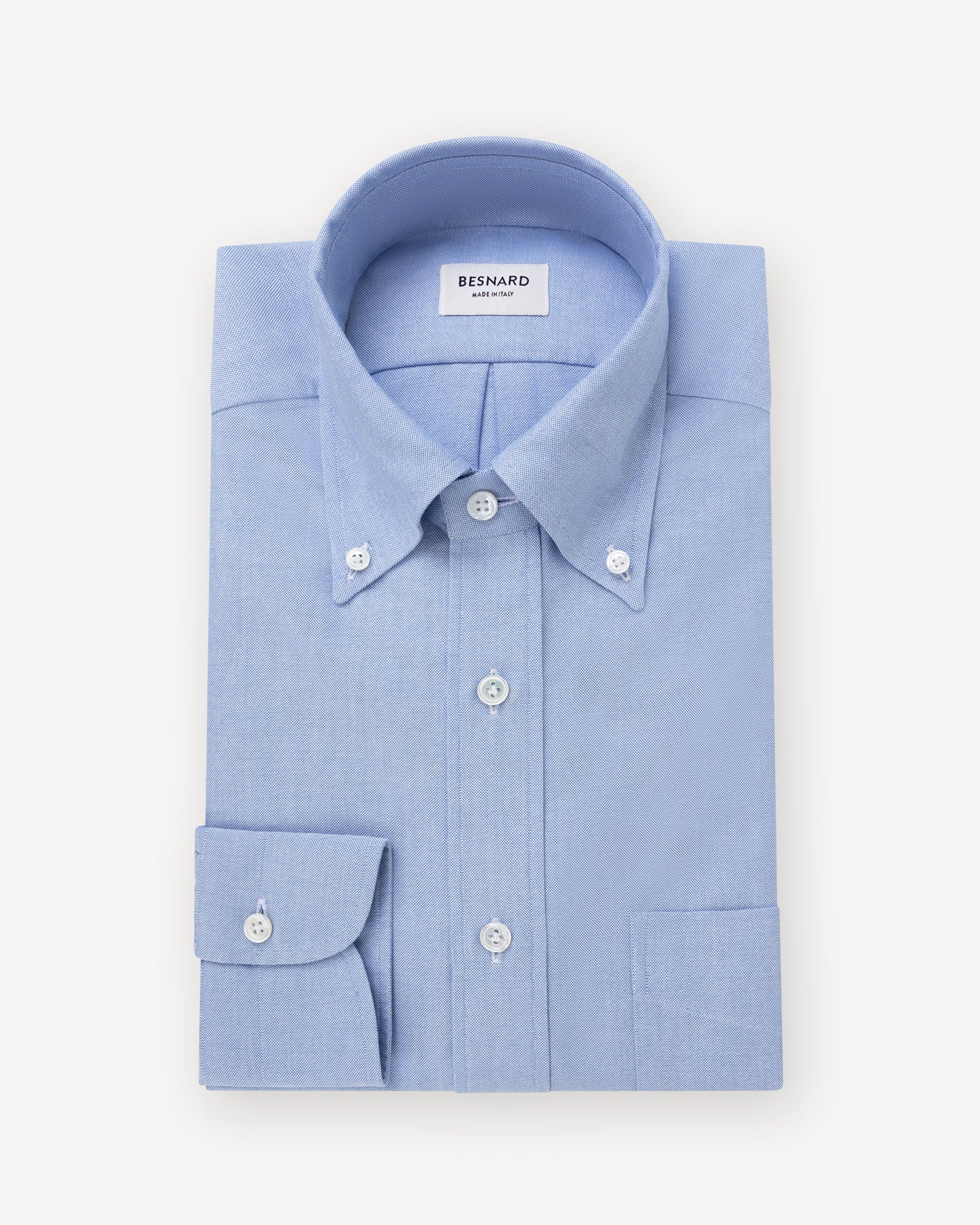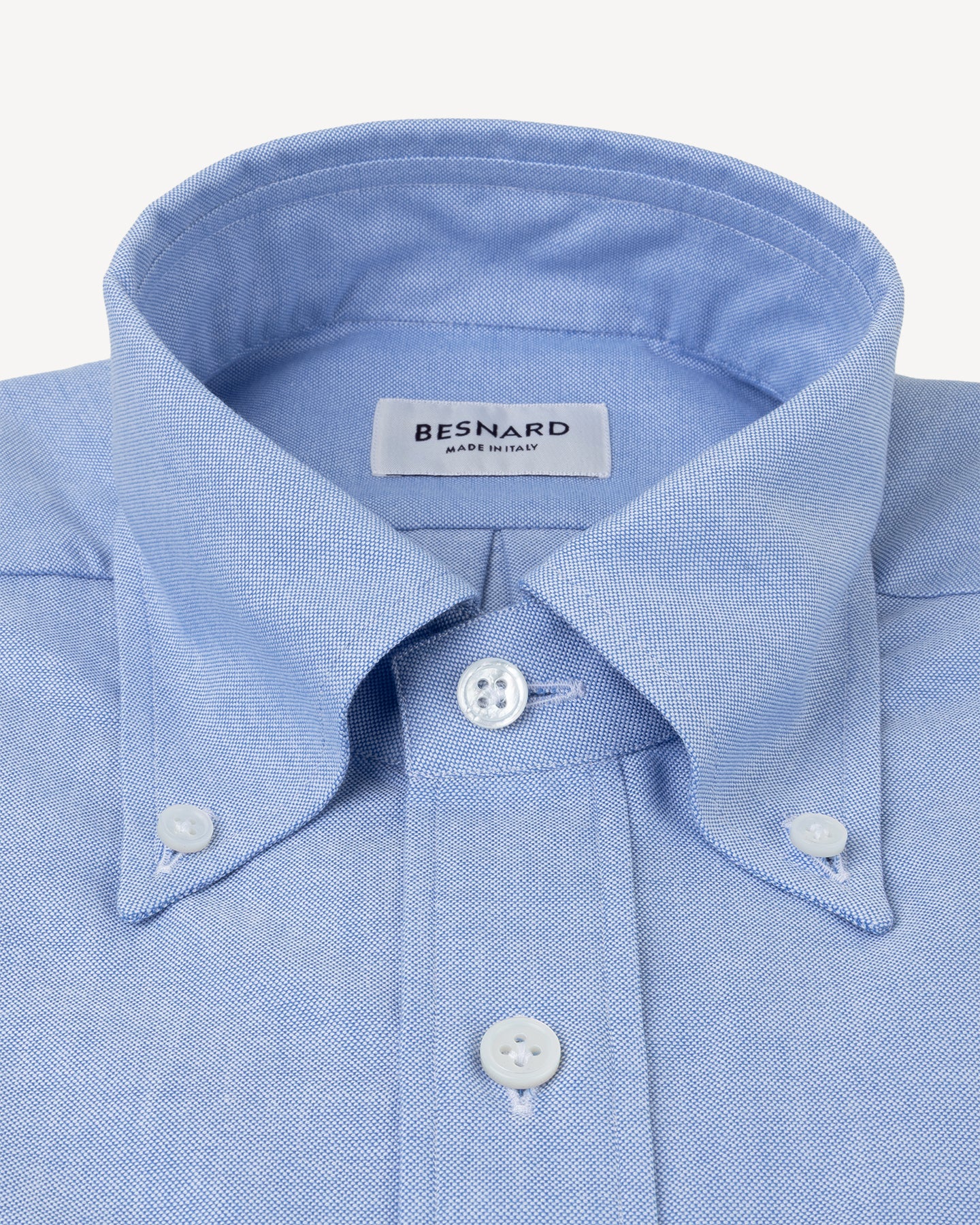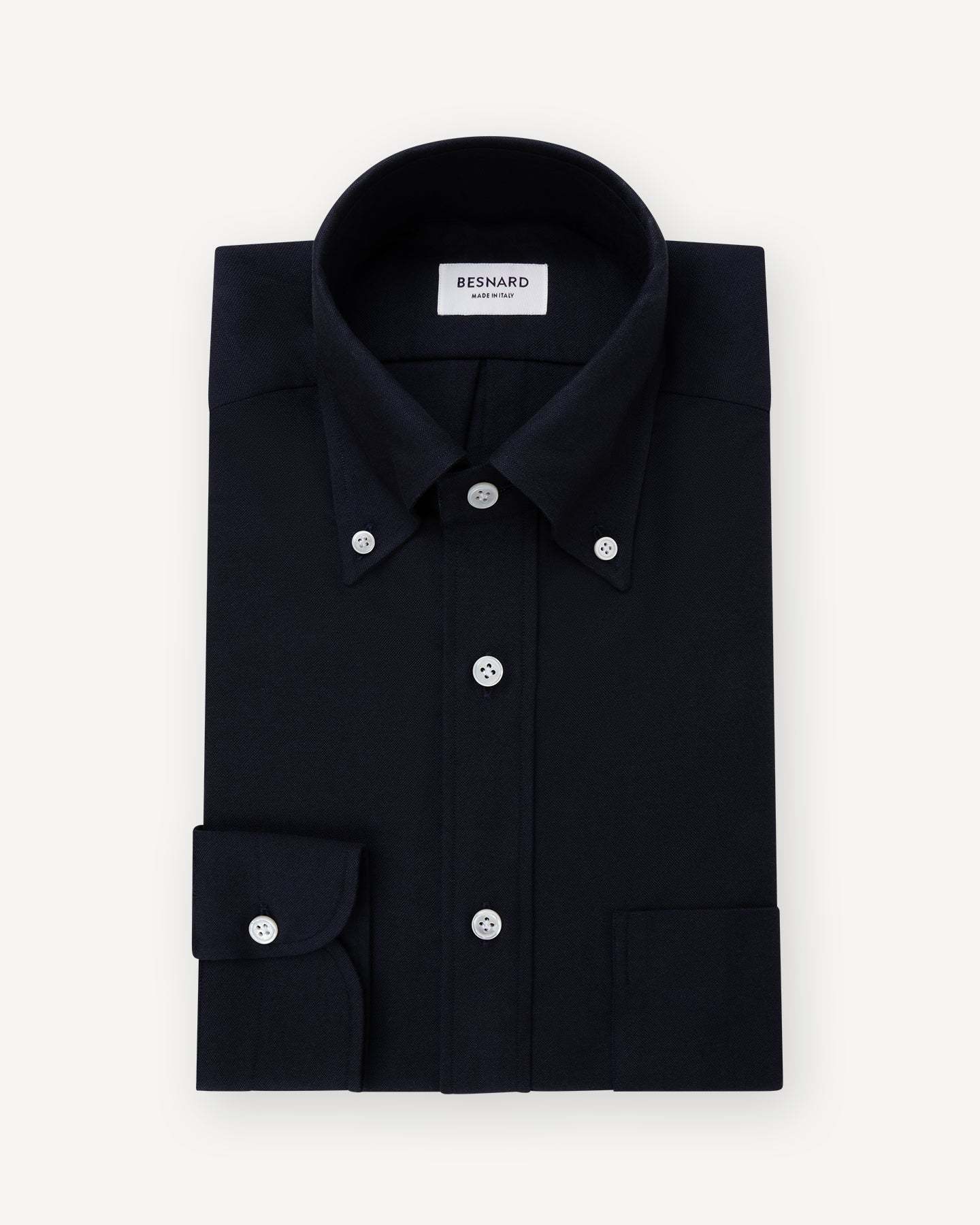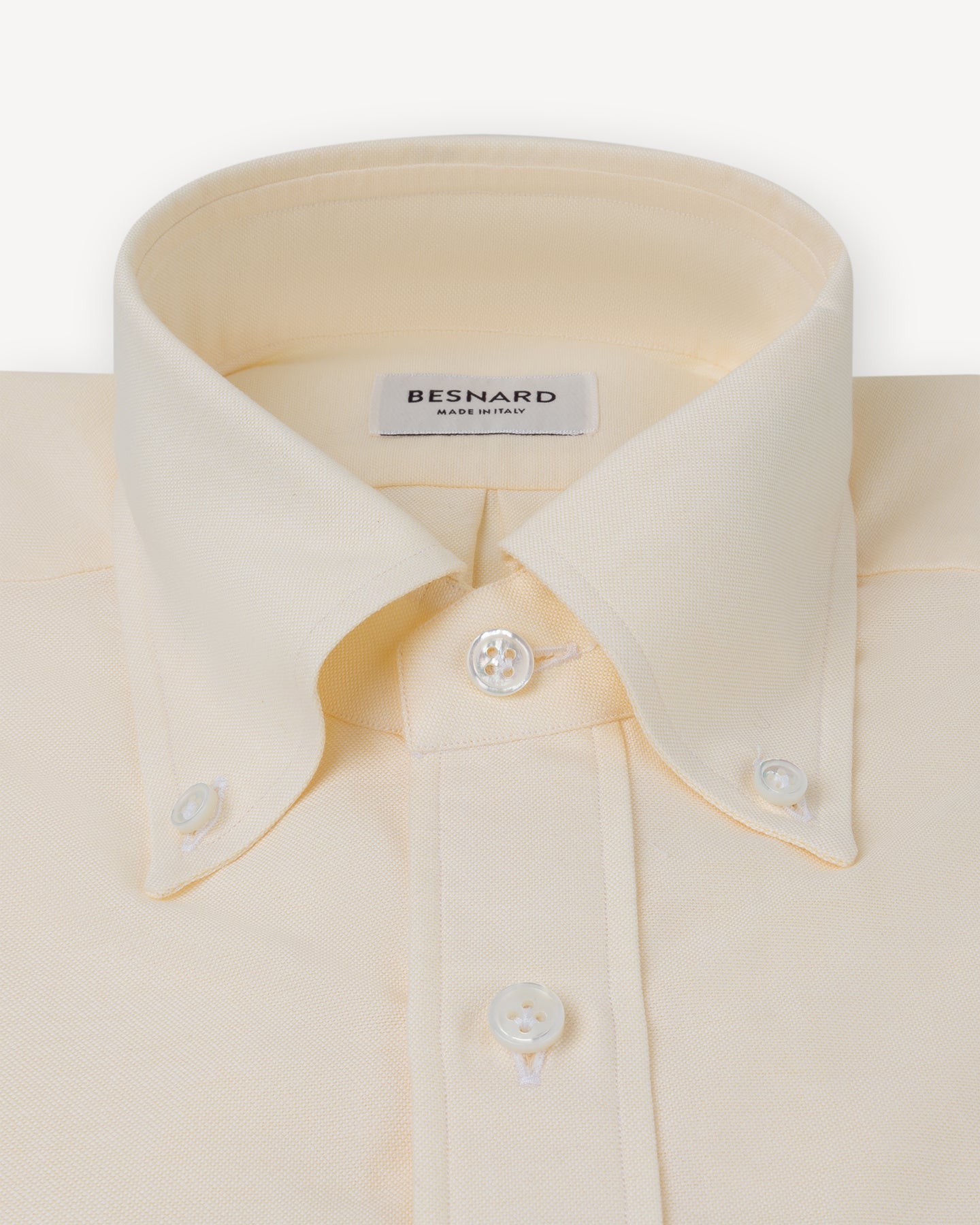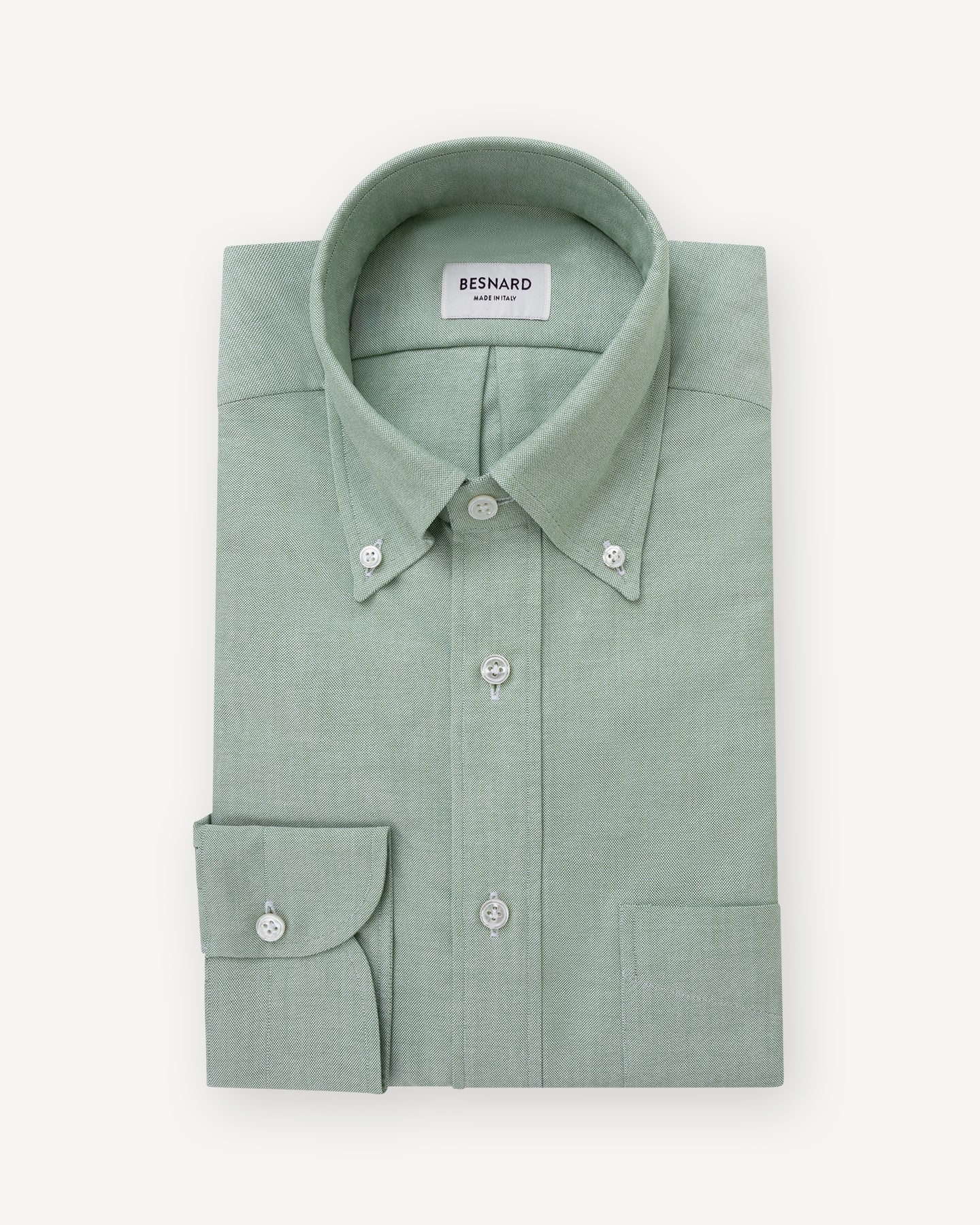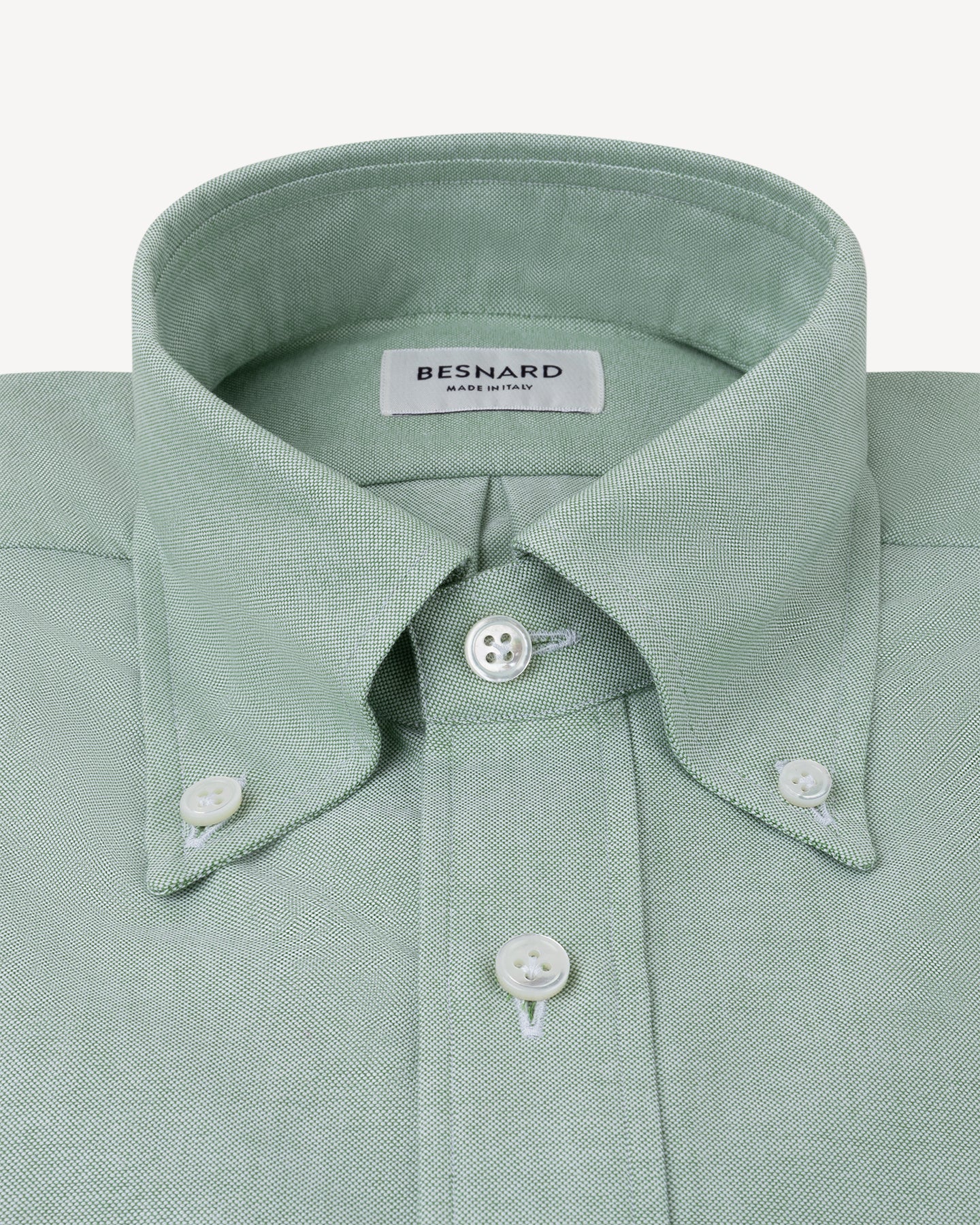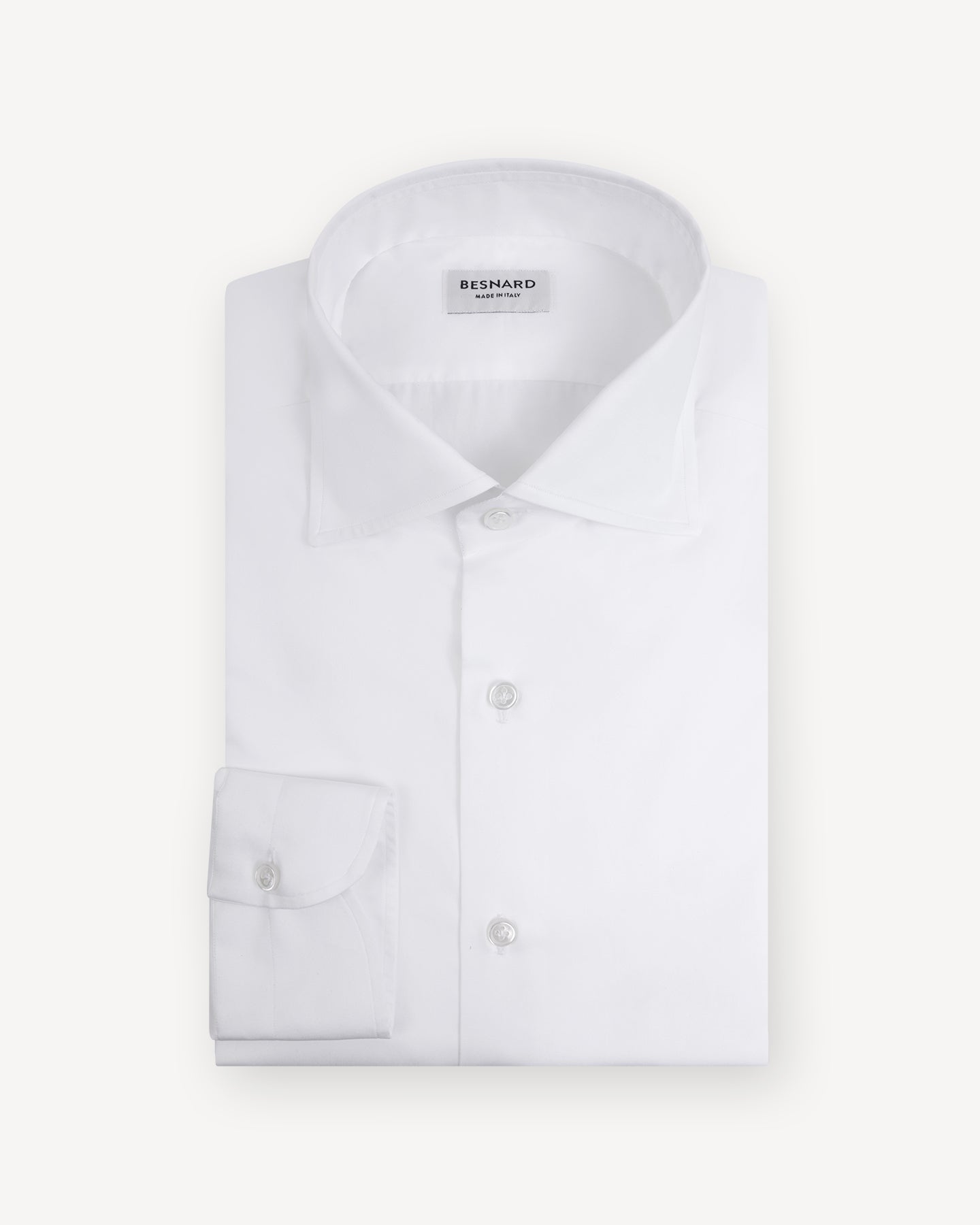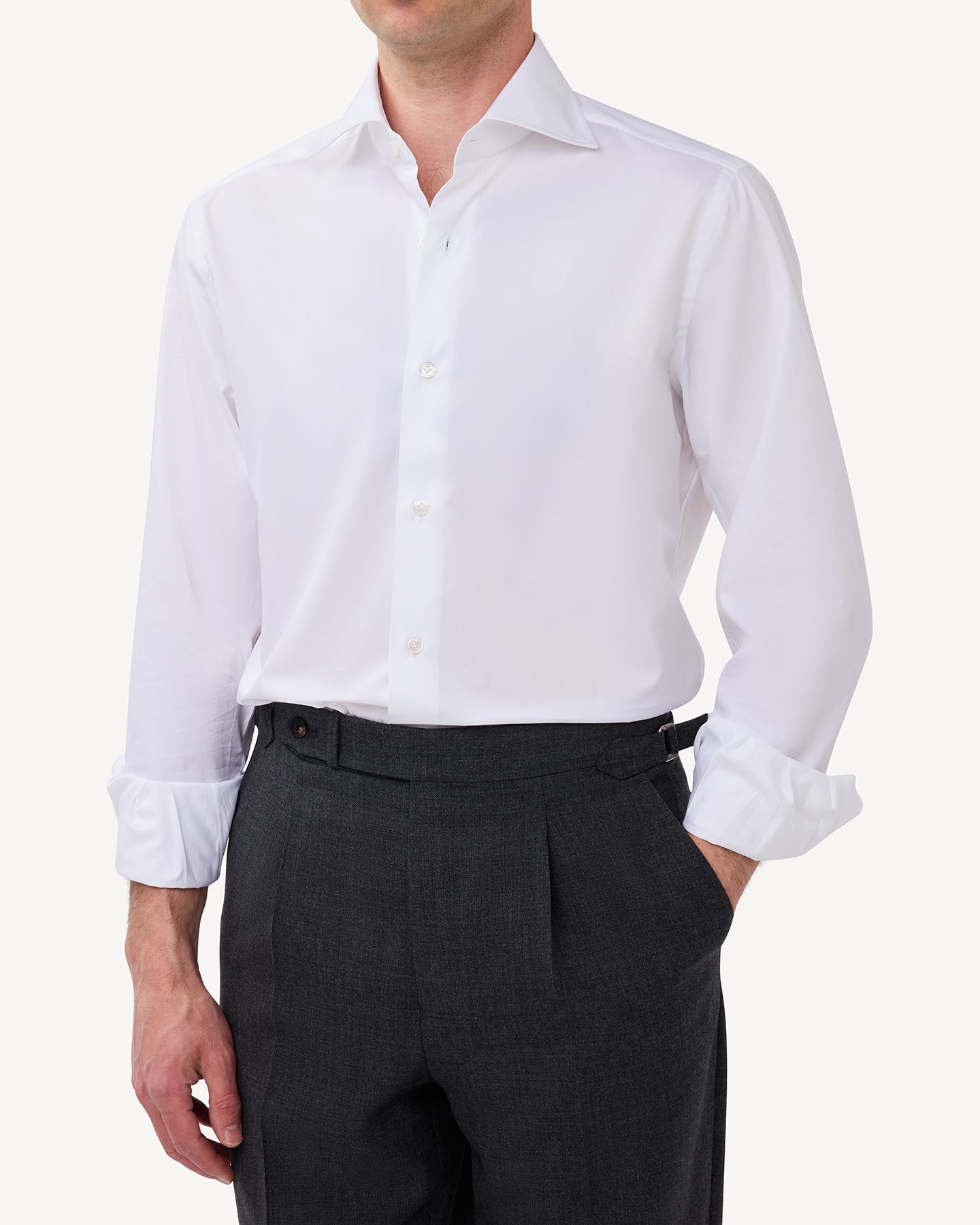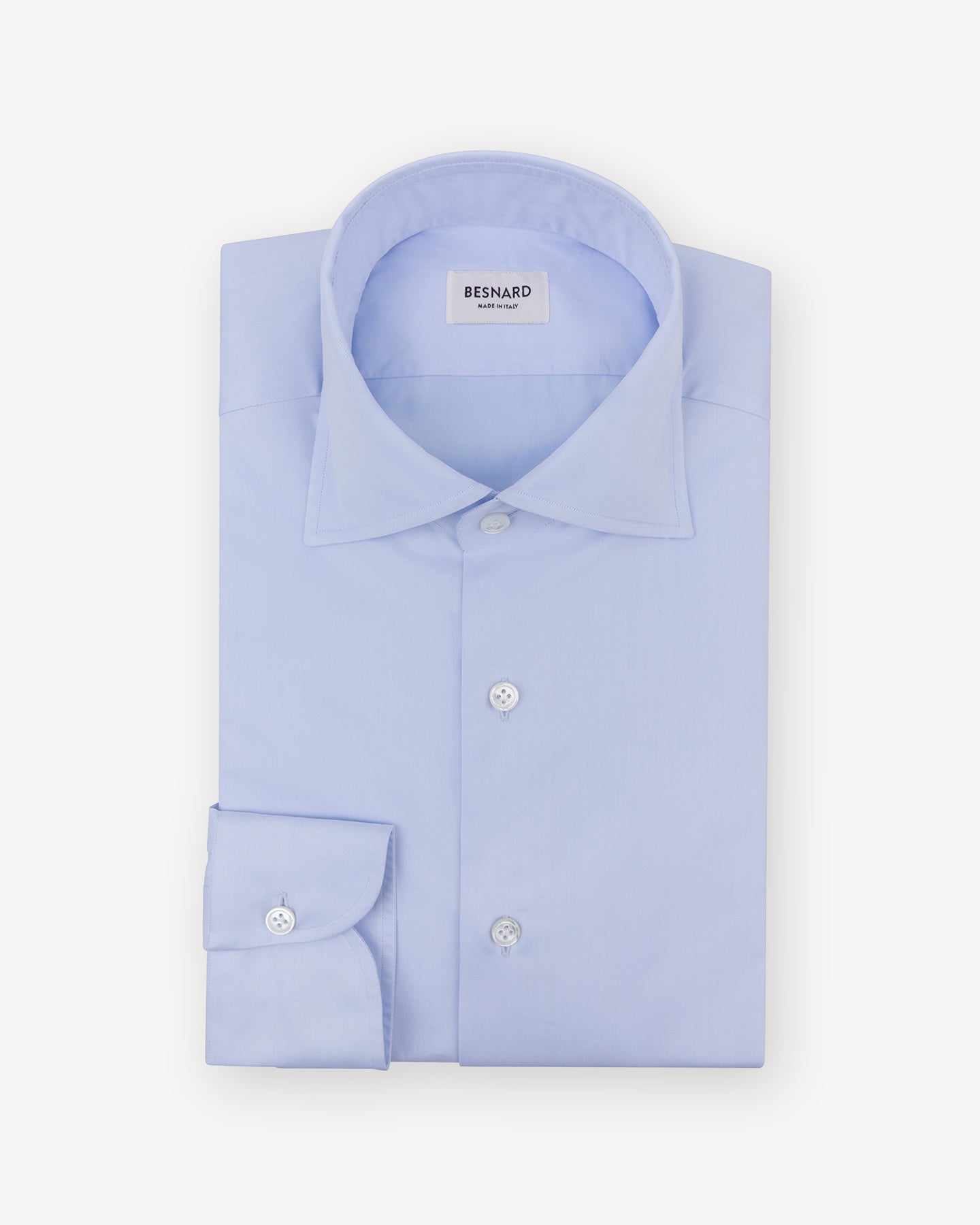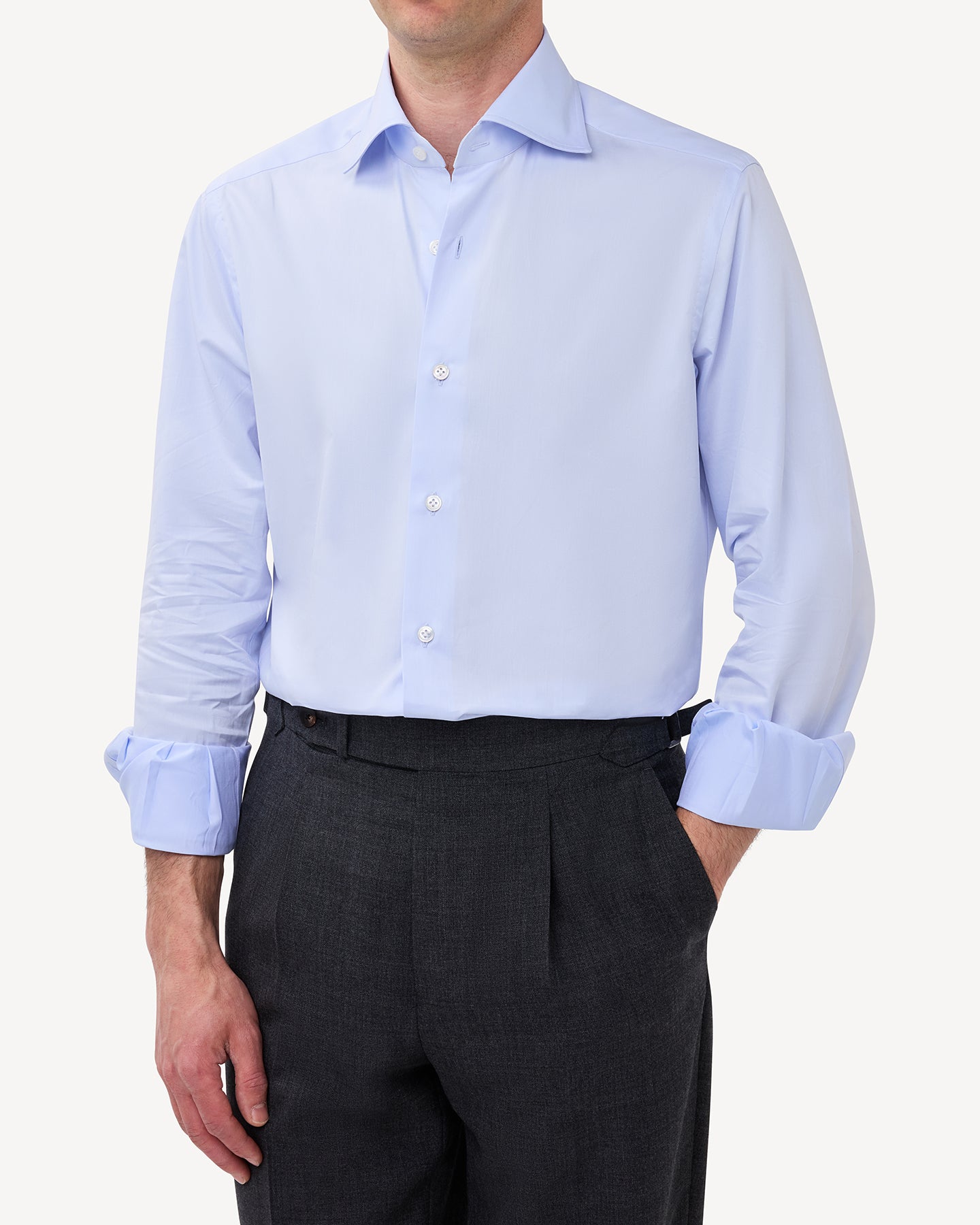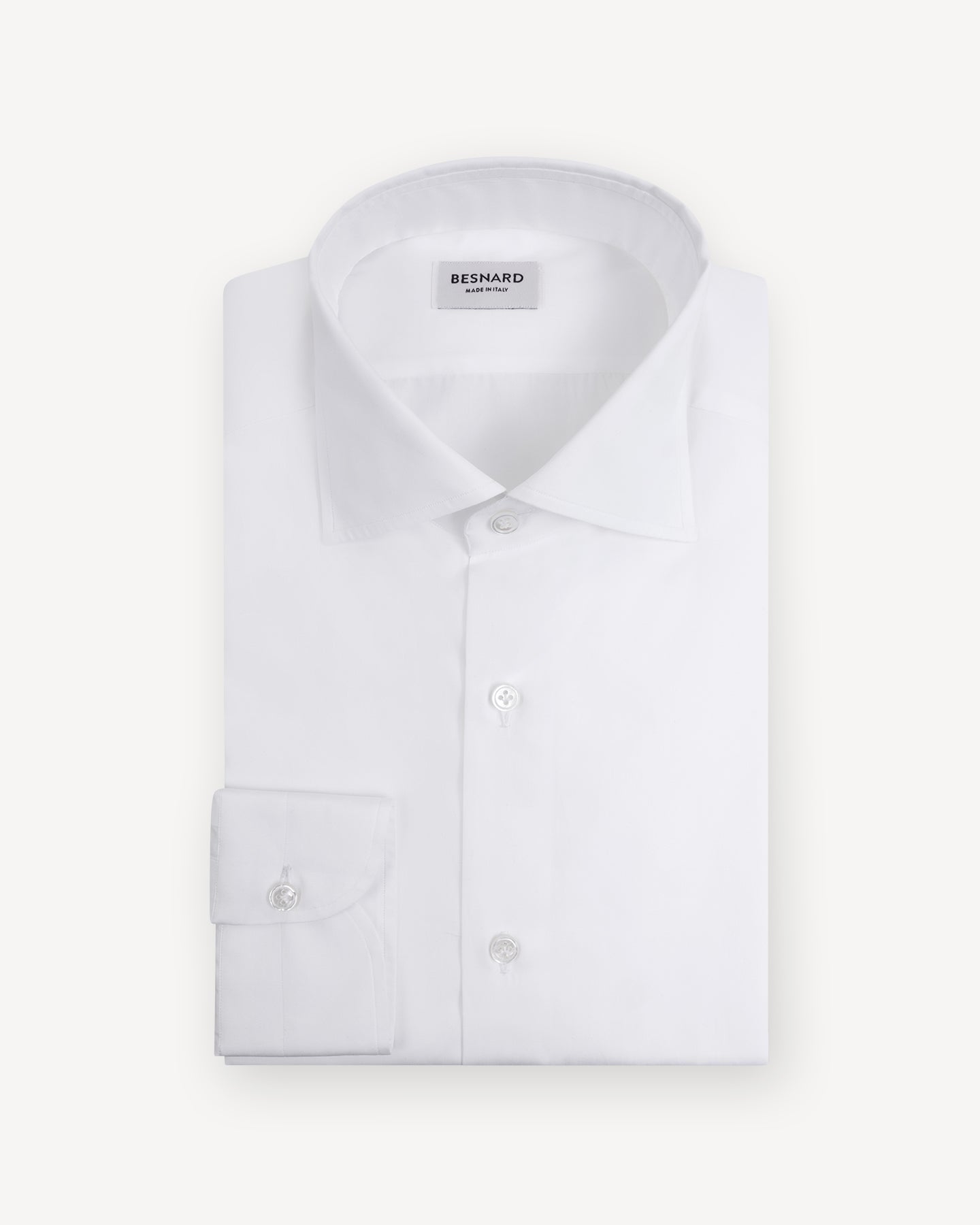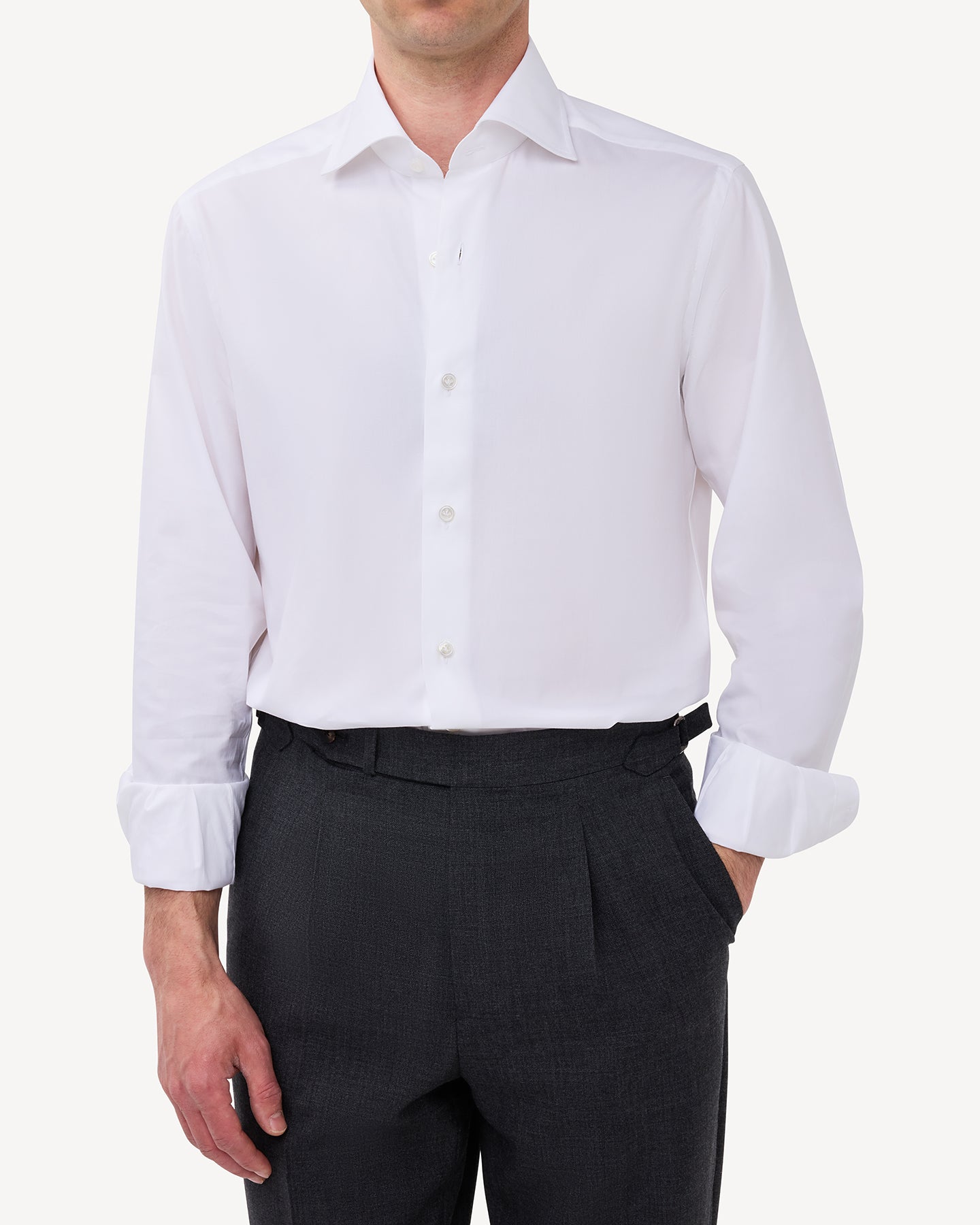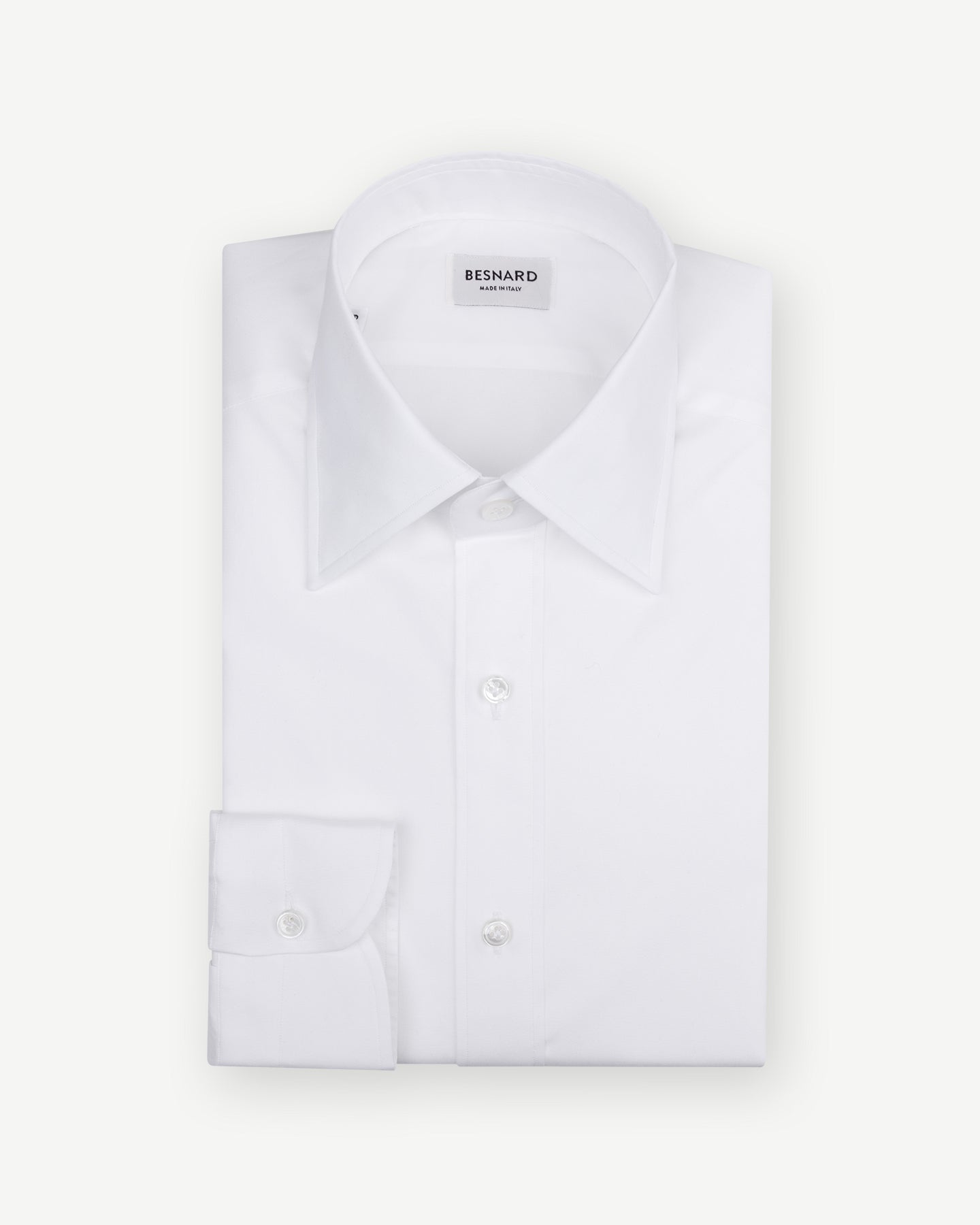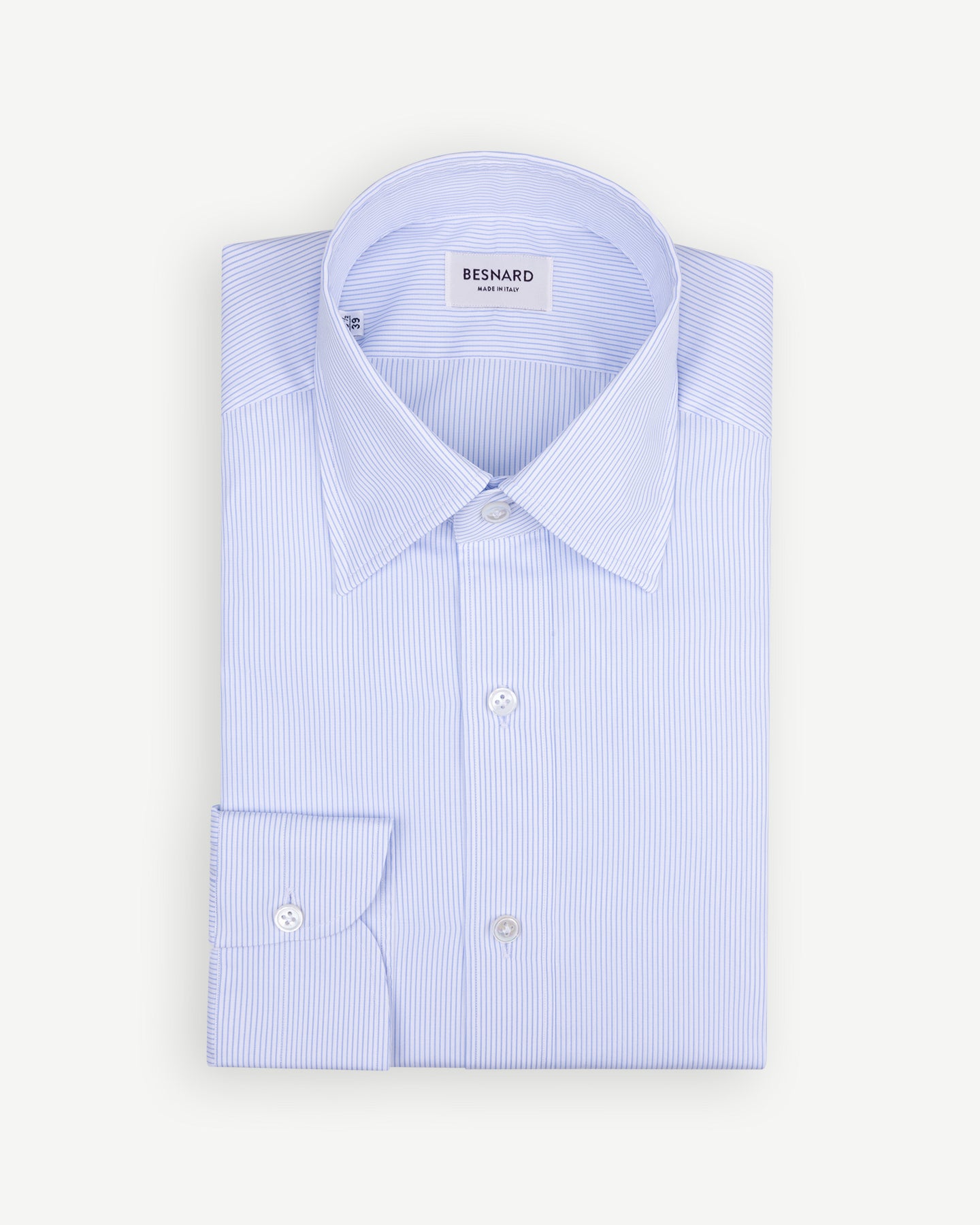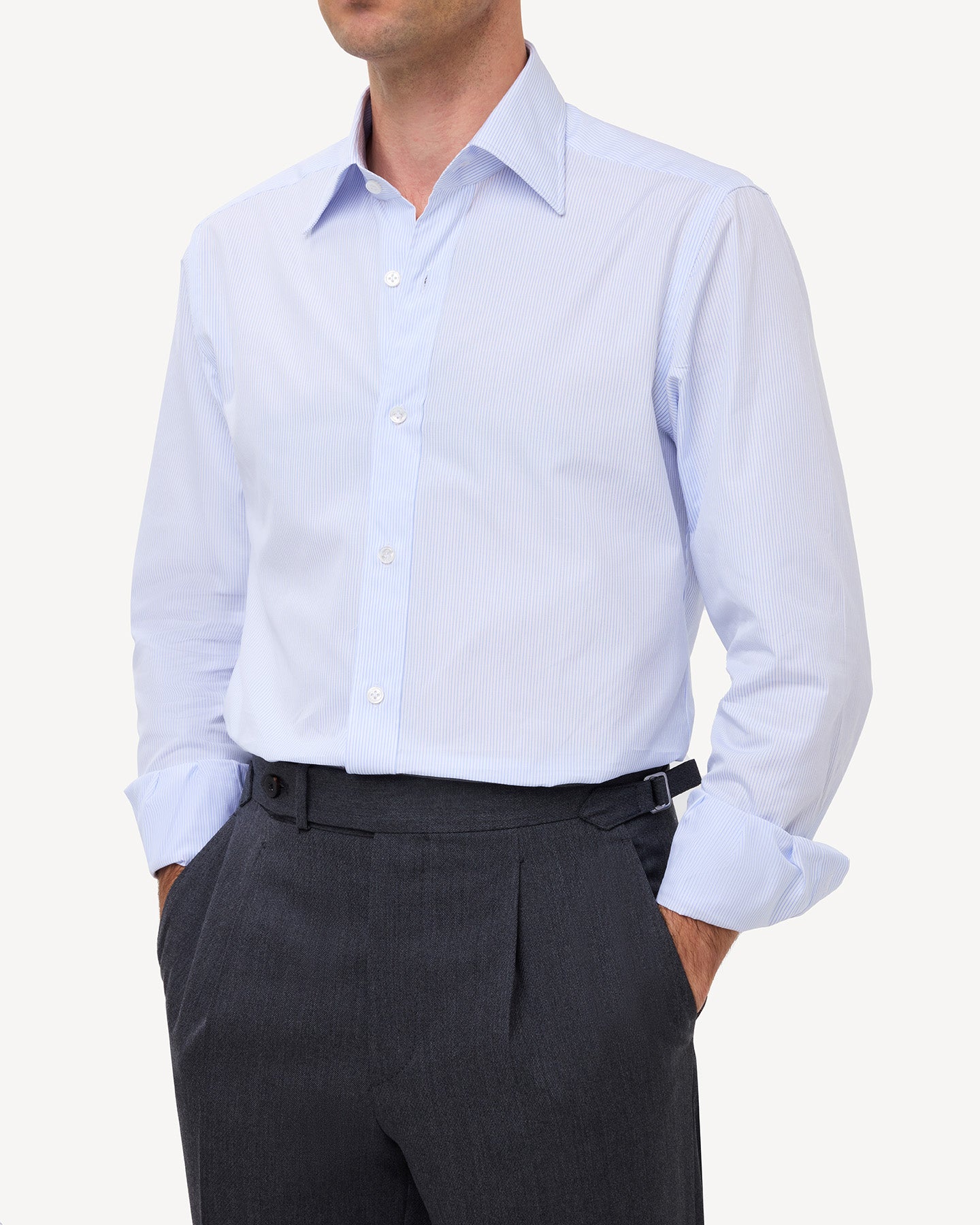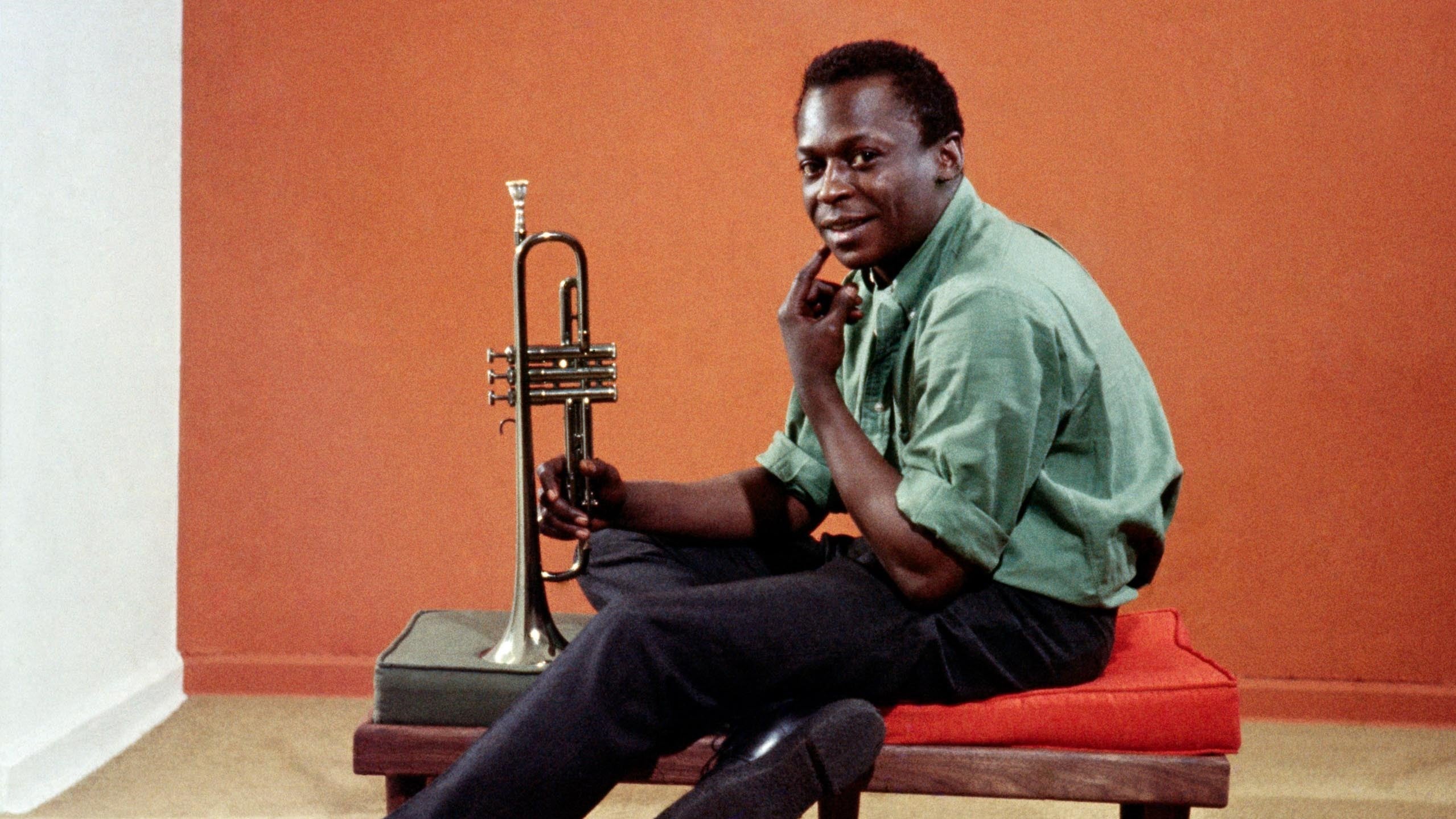Article: An Introduction to Shirt Fabrics

An Introduction to Shirt Fabrics
In many ways, the fabric determines the character of the shirt. It affects how the shirt feels, looks and drapes.
Some materials, such as linen, are generally more appropriate for the summer whereas fabrics such as cashmere-cotton are suitable for fall or winter. As you might have guessed, cotton is the most popular material for shirts. It feels comfortable and can be worn throughout the year.
But there is far more to a fabric than just the raw material. You may have come across a claim such as “This twill fabric is made from 100s two-ply Egyptian cotton”. What’s that all about?
In this introduction to shirt fabrics we dive into the main components that determine the quality and character of a fabric: material, ply, yarn count and weave.
Material
Whether it is woven from cotton, linen, wool, silk or a blend of these, we recommend fabrics that are produced from 100% natural fibres. Since cotton is the most popular shirting, we will elaborate a bit on its origin.
Raw cotton is a soft and fluffy fibre that grows on the Gossypium plant. Its quality is for a large part determined by the length of the fibre. Longer fibres can be spun into finer yarns, without sacrificing the strength. Some types of cotton – such as Egyptian and American Pima cotton – have extra-long fibres and are therefore known to produce the finest fabrics

An extremely rare type of cotton is grown in the Caribbean, where the unique weather conditions produce the finest, longest and strongest fibres. This luxurious variety is called Sea Island cotton. Apart from the rarest and the finest, it is also the most expensive cotton in the world.
If the origin of cotton is not clearly communicated, this does not necessarily mean the materials themselves are of poor quality. Some brands actively promote the origin of the fabrics, others simply don’t.
Weave
Where the fabric shapes the character of the shirt, the weave shapes the character of the fabric.
In short, the weave is the way in which the yarns are put together to make a fabric. Yarns that run vertically are called warps, horizontal yarns are called wefts. The pattern, direction and number of wefts and warps are defined by the weave.

Most shirt fabrics can be categorised in three weaves: the plain, twill and basket weave.
Twill
The twill weave has a weft yarn that runs over and under multiple warp yarns. It is easily recognised because of the distinctive diagonal texture. Twills are denser than other weaves and often have a bit of sheen – it is therefore considered a more formal fabric.

But there are some casual twill weaves as well, such as denim, where the indigo dyeing of the warp creates its casual character. Other variations you might be familiar with are herringbone and houndstooth. A benefit of twill fabrics is that they are usually quite easy to iron and that they don’t crease as much.
Plain
The plain weave is a simple over and under pattern. The best-known example is probably poplin. End-on-end – also known as fil-a-fil – is also a plain weave where the warp yarn has a different colour than the weft yarn, producing a rich heathered texture.

Both are crisp fabrics and great options for business shirts. On the downside, they are less absorbent and resistant to creasing than for example a twill weave.
Basket
The basket weave – also known as the panama weave – has multiple weft threads that run over an equal number of warp threads. The most famous version is unquestionably the oxford cloth – a single colour of weft is crossed with a white warp yarn creating its unique checkerboard appearance.

The oxford cloth is used so often on button down shirts, that it eventually became its own thing – the oxford cloth button down (or O.B.C.D. as the connoisseurs like to call it). Oxford cloth is a great option for casual shirts: it is absorbent, breathable and easy to iron.
If you’re an oxford cloth enthusiast like we are, but if you also wear business shirts, consider alternatives such as pinpoint oxford or royal oxford – they have comparable characteristics but a more formal appearance.
Single ply, two-ply and three-ply
You have probably come across the term two-ply – or two-fold – cotton, as this is sometimes mentioned in the description of premium fabrics. But what is it exactly?
Ply refers to the amount of fibres that are spun into a yarn. Single-ply means a yarn is spun from one fibre. If two fibres are twisted into a yarn, it’s called two-ply. The latter tends to be stronger and more hardwearing – and definitely adds value to your shirt.

You may see a fabric’s construction being described as something like “80/2x80/2”. This means that for both the warp and weft two-ply yarns are used. The number 80 refers to the yarn count, which we will dive into now.
Yarn count
The yarn count – or thread count – refers to fineness of the yarns used to make the fabric. It is indicated by labels such as 60s, 80s, 100s and 120s. The higher the yarn count, the softer and silkier the fabric.
High yarn count fabrics, however, are often quite delicate and tend to crease easily. It is very similar to super numbers used in suit fabrics – a super 150s cloth is very soft, but it usually is not very hardwearing.

As a rule of thumb, aim for a yarn count between 80 and 120 for business shirts. For casual shirts – such as an oxford cloth button down shirt – a lower yarn count is rather common: you probably don’t want your casual shirt to be too shiny and preferably resistant to creasing.
Explore our collection to browse shirts in a variety of fabrics, colours and weaves.
